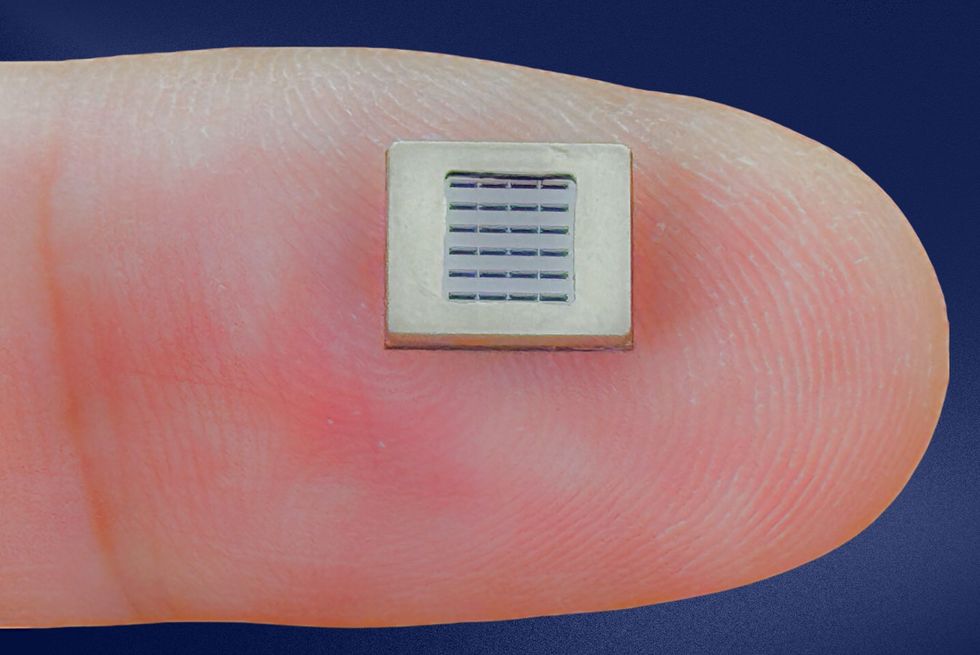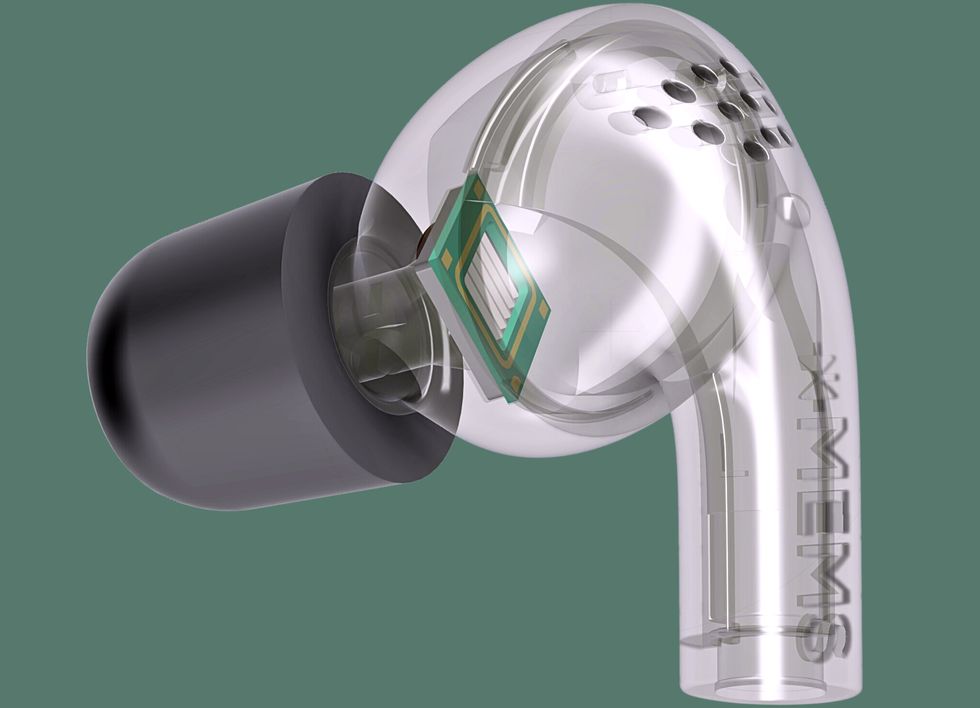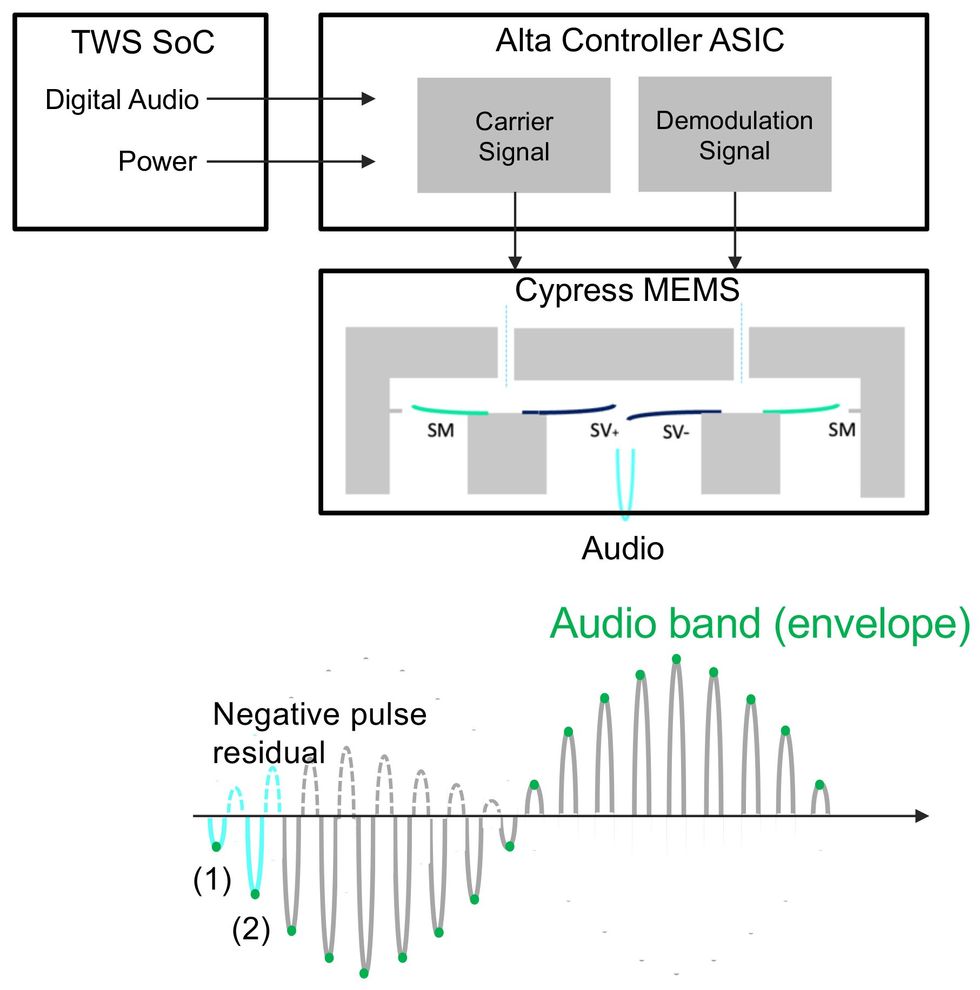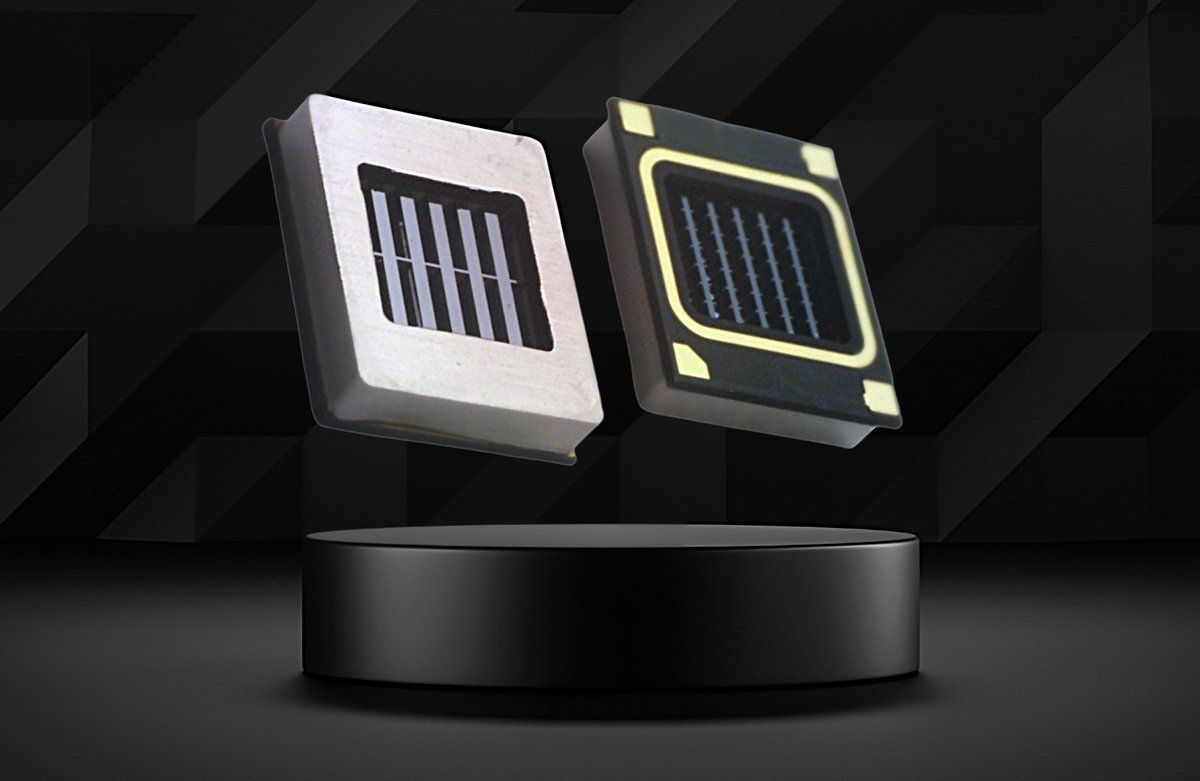Despite having heard the song probably 50 times in the last two years, I discovered there are notes in David Bowie’s “Starman” that I’d never heard until one morning in early November. That’s when I got to try a prototype noise-canceling earbud from xMEMS.
The five-year-old startup specializes in making speakers from microelectromechanical systems (MEMS) silicon-and-piezoelectric chips. Its existing designs are starting to appear in consumer devices, and they have many advantages over today’s miniature speakers. Those previously hidden notes in “Starman” are just one of them. But their peak volume has never been enough to overcome a technical requirement of noise-cancelling earbuds—20 more decibels in the bass register. A new MEMS tech, called Cypress, forms audible tones by generating and combining ultrasound and should give chip-scale speakers enough oomph for the job and maybe even lead the tech takeover for other small speakers, like those in cars and computers.
“Most conventional speakers generate sound by actuating and pushing a diaphragm; you’re pushing air to generate sound,” says Mike Householder, vice president of marketing and business development at xMEMS. With Cypress, he says, “We’re actually going to use ultrasonic modulation and demodulation to create pressure and generate sound...this is fundamentally the first time humans are experiencing sound generated in a different way.”

MEMS chips have already conquered the microphone market, making up the majority of microphones sold even five years ago, according to the Yole Group market research firm. But speakers demand something different from MEMS, explains Householder. They have to propel a volume of air, rather than be pushed by it. xMEMS speakers going into products now are chips with multiple silicon flaps coated in piezoelectric material that vibrate at audible frequencies.
XMEMS has already delivered a number of advantages of MEMS technology. MEMS chips that specialize in audible frequencies include very low phase distortion. That’s the variation in the timing of an acoustic signal according to its frequency. In an earlier article, Brian Lucey, a mastering engineer who has worked on 9 Grammy-winning albums, told IEEE Spectrum:
“Phase inaccuracy is so ubiquitous that we simply accept it.... Driver technology up to now has never been able to be this accurate. It’s really not a question of what does it sound like when it’s inaccurate, because that’s just normal to our ears. It’s more a question of what does it sound like when it’s this near perfectly accurate.... Everything is hitting you at the same time. There’s no time smear in the way the sound comes across.”
From a manufacturing and engineering standpoint, MEMS is a win, as well, argues Householder. For one thing, it’s a less complex system, made up of just a single packaged chip and an accompanying IC instead of a complex assembly of coil, magnet, diaphragm, and other parts. Coil speakers require labor-intensive manufacturing and testing, partly because of inconsistencies from unit to unit. And MEMS allow for easier earbud design, because they don’t cause electromagnetic interference like coil speakers and they don’t require a particular volume of air at the back of the earbud to improve sound quality.
MEMS Noise-Cancellation Problem
All that is enough for some applications, but for “true wireless stereo” earbuds there’s a catch. If you have a pair, and you probably do, you’ll notice a tiny air vent. It’s there for three reasons, Householder explains. One is to vent uncomfortable pressure from between the bud and your ear canal. Another is to reduce an odd effect where your own voice gets amplified inside your head. And the third is to facilitate active noise cancellation.

Active noise cancellation relies on algorithms that assume a relatively stable seal between the bud and your ear. But real life doesn’t work that way. The buds shift in ordinary use and the seal is not consistent. The vent is meant to be a much larger leak in the system than any small breaks in the seal, overwhelming the small changes and allowing the noise-cancellation algorithm to do its work, Householder explains.
“The downside is when you open air to a speaker,” it effects low frequencies, he says. “That’s just the physics of speakers.” In an earbud you’ll typically lose about 20 decibels of low frequency, he says. On their own xMEMS speakers in devices today can hit 120 dB, and, yes, that’s a pretty unhealthy level already. But to cancel out the jackhammers and jet engines of the world, you need 140 dB at low frequency.
To make up the difference with a MEMS device, designers currently pair it with a coil speaker that’s used as a woofer. But xMEMS new ultrasound tech can do the complete job on its own, says Householder.
How xMEMS Ultrasound Tech Works

In the first step, a custom IC modulates an ultrasound carrier signal with the audio signal. The result is an ultrasound signal whose amplitude is the shape of the audio signal. This combined signal drives a pair of cantilevers that turn the signal into ultrasonic pressure waves inside the speaker chamber. A second signal then periodically vents the chamber, producing a series of pressure spikes whose envelope is the audio signal we hear.
The new chip is effectively 40 times as loud, reaching more than 140 dB even at the lowest end of human hearing, 20 hertz. And that’s good enough to do the job of active noise cancellation. Just as important, it gives the technology a path to consumer products that need even more volume, such as smartphones and laptops.
Certain early customers are already sampling the prototype Cypress chips, and production samples are set to ship in June 2024, with mass production set for late 2024.
- Smartphone Accelerometers Can Be Fooled by Sound Waves ›
- MEMS Microspeakers Blast Sounds From the Fab ›
- Smartphone Screens Are About to Become Speakers - IEEE Spectrum ›
- Fan-on-a-Chip Cools Smartphones and Laptops - IEEE Spectrum ›
- Smartwatch Speakers Slim Down With Silicon - IEEE Spectrum ›
- Ultrasonic Beams Create Secure, Private Audio - IEEE Spectrum ›
Samuel K. Moore is the senior editor at IEEE Spectrum in charge of semiconductors coverage. An IEEE member, he has a bachelor's degree in biomedical engineering from Brown University and a master's degree in journalism from New York University.



